History originally published in AutoWeek November 11, 1985
Jackie Stewart has the voice of the veterinarian. With aged-in-an-oak-cask Scottish brogue, he could anesthetize a horse or soothe a savage house cat just by speaking. It’s difficult to reconcile this voice and the subject, his one season in the L&M Lola T260, one of the most beastly vehicles in the history of modern racing. Discourse so dispassionate on a topic so full of passion, talking with me by telephone about a race car driven 15 years ago.
Not long before, I had been passenger aboard Lola T260 chassis No. 2, the second of only two made and the backup car for the L&M/Haas team. The driver, though, didn’t have the familiar tartan on his helmet but rather was current owner Chuck Haynes, proprietor of Can-Am of Manchester, Missouri, and the venue was St. Louis international Raceway’s new road course, a track not even imagined when Stewart and the T260 met the Can-Am fray in 1971. The ride was fraught with usual difficulties of riding two-up in a race car whose passenger accommodations are provided simply to meet rulebook stipulations, except that this Lola stretched the rules by making the second seat child-size. No human pelvis could ever wedge into that narrow space. I sat instead of a half-helmet higher than Haynes, clinging tightly to what I can’t remember now as he tip-toed the Anglo-American projectile around St. Louis’ 12 turns and blasted up the straights, short shifting at 5000 RPM and missing the best part of the power curve because of the green and marbled track. Yet the potential of the 494-inch aluminum-block Chevy V-8 was fully exhibited, chuffing in great gulps of Midwestern air through the staggered velocity stacks and Lucas timed fuel injection and turning it into enough torque to launch the space shuttle, certainly enough to turn a passenger’s ride into a mind-buffeting trial, a challenge to keep up with G-forces that seem to alternate from every point on the compass.
But now, here was Jackie Stewart calmly describing what it was like the pilot the Lola: “It was difficult to drive. It was a short-wheelbase car, which meant that the car was what I would call ‘darty.’ In other words, it darted one way and then darted the other. It was not a forgiving car. A long-wheelbase car tends to be a little more flowing in its movements, particularly on breakaway and over bumps, whereas the 260…was extremely nervous, and one had to be one step ahead of it all the time, which was an extremely busy program.”
The T260 was Lola owner and designer Eric Broadley’s attempt to redefine sports-racing car design in a way that the Lola T70 had. The T70 dominated the inaugural year of the Canadian-American Challenge Cup, winning every race in 1966, John Surtees garnering the championship. But every year thereafter it had been Bruce McLaren’s orange cars that led the field and brought home champions laurels, while Broadley’s Lolas played catch-up.
The T260 would change that and do so by innovating, Broadley hoped. The engine broke no new ground, the 8.0-liter Chevy being the standard of the series, but Broadley moved it forward, a long bell housing connecting it to the four-speed Hewland LG 500 Mark II transaxle. This also moved the driver forward as in today’s cars, one of the first to do so. The T260 was also first to use side radiators, fed by NACA ducts alongside the driver. It simplified plumbing and eliminated blasting drivers with hot air off front-mounted radiators.
Most noticeable was Broadley’s abandonment of The Wedge, which was how downforce was achieved in those infant days of aerodynamics. Movable wings had been banned in 1969 and Jim Hall’s sucker Chaparral was deemed illegal in 1970. The Broadley sought not so much to create downforce with the shape of the T260 as to have a low-drag car without lift, especially that sudden massive lift that could – and sometimes did – pick a Can-Am car off the track and drop it on its back. The function of the mesh-covered holes in the front of the T260 was to stop low air pressure from developing over the front end. It was not, however, open to the ground, and so was not a ground effects device. The open area on the sides of the car behind the front wheels, a feature McLaren used as well, was intended to allow high-pressure air under the car to escape.
The shape of the front end was compromised somewhat by Stuart’s insistence on outboard brakes. Stewart was not involved with the design of the car and doubts that the T260 was built exclusively for him as has been alleged. “Obviously, if they made it for me they would have made it so that a big fellow couldn’t get into it,” he chuckles, “but Frank Gardner I think did some testing in the car originally… And Frank’s a big one.”
But the brakes, “that had a lot to do with me. I didn’t like that. That was just a safety factor that I felt was inappropriate,” Stuart says quietly without mentioning that his good friend Jochen Rindt was killed in a Lotus Formula One car when a halfshaft to his inboard-mounted brakes broke and spun the car into a guardrail.
The outboard front brakes scotched plans to use 13 inch wheels in front. The bigger 15-inch front wheels meant that the fender line had to be altered from the original line that matched that of the hood. The front of the car developed insufficient grip, however. Stewart recalls that “you had to chuck into oversteer to get around the corner, which really wasn’t much fun when you are playing with 750 or 760 horsepower.”
Read my experience driving a “street legal” Lola T163 on an Indiana highway.
One of the problems was that little testing was done on a car once it left Europe, McLaren and Lola alike. Stewart was commuting between America and Europe, running the full Can-Am and Grand Prix program and doing sun-up to sundown public appearances for L&M (winning the F1 championship and developing a bad case of mononucleosis while doing so). “We just used each practice session as a test program. Each time we came along there would be a giant difference and suddenly the car would be an inch longer or there would be a “cow catcher,” as we called it in front, that great big wing.”
That wing caused his own problems, and in fact left Stewart momentarily at a loss for words. “It then started to pivot on the front wing. The wing was so big that every time it looked at a corner it suddenly – the aerodynamics on fast corners – it was an absolute nightmare.”
Stewart calls the season a “character builder.” It was also a learning experience. “I say it certainly made me recognize that you had to make a car work for you rather than against you. It certainly was clear to me that you couldn’t race an impossible car, and try to compete against top-line opposition was impossible, no matter how hard you drove it. And the other thing was that the car with that kind of power, the amount of stress that you put on a vehicle by having to overdrive it – in other words, to drive ‘round its problems – you are having to push it harder than it wanted to be pushed (and) therefore magnified the likelihood of mechanical failure.”
After the ‘71 season, Stewart signed on to drive with McLaren, bumping Peter Revson, who had won the championship for McLaren in ‘71. (It was a difficult decision for both McLaren, abandoning his champion, and for Stewart, leaving Carl Haas and the Lola team with whom Stewart got along quite well, but Stewart concedes the need for race driver to go with the best equipment available. Ironically, Stewart suffered from a bleeding duodenal ulcer that forced him to back out of the Can-Am ride and let Revson back in.) Lola fielded the T310 for David Hobbs, had a particularly unimpressive 1972 season, and dropped out afterwards.
The two T260’s saw no action in 1972, but in 1973, Bob Nagel drove one to fifth in the series behind for Porsche 917/10 Turbos and in 1974, with the Porsches defeated by the fuel consumption rule, Nagel finished fourth and John Gunn fifth in the two Lolas. And ‘75, the big-blocks were finished, and so were the T260’s.
Chassis number one is somewhere in England. Chassis number two was restored for Haynes by Tom Frederick of Brooks, California, and now sees occasional vintage racing duty under Haynes. The car’s legacy, however, is as challenger to the throne so long occupied by McLaren.
“But,” says Stewart in that even, calm voice, “we weren’t a serious threat…”
I hadn’t been writing very long at the time, before I quite my Day Job to jump into Automotive Journalism full time, when I came home from work one day to see “1” in the messages. An answering machine, for you youngsters, was a box about the size of a hefty tome (that’s a book) that set on your desk, attached to your desk phone, which was the only kind of phone there was, other than one that hung on the wall.
Pushing the play messages button elicited a familiar voice, but one I had only heard on TV. But the Scottish brogue was instantly recognizable. As if it had been necessary, it started with “’Ello, this is Jackie Stewart and I’d love to talk with you about the Lola T260.” Or something like that. Jackie’s voice went on to explain that he was in a hotel in London and to call him at my earliest convenience because he’d be leaving the next day.
As if I needed to be encouraged to call. I hooked my tape recorder to the phone and made the international call. And the voice that answered was the same as one the answering machine. Jackie talked about the T260 and Eric Brodley and the contretemps of the trans-Atlantic life of a race car driver then.
I don’t know whether I saved the cassette from the answering machine. I probably have the interview tape somewhere in the box of cassettes. I did save just about everything from back in the day, at least until I start looking for it. That was, however, the only time I spoke with Jackie Stewart; despite his work with the press for Ford about that time, I was never invited to those particular media events. That’s OK. That call was enough for one career, and for one lifetime.









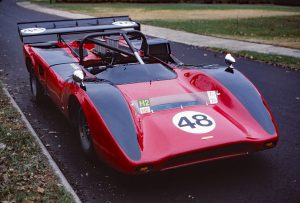
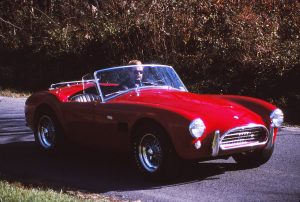
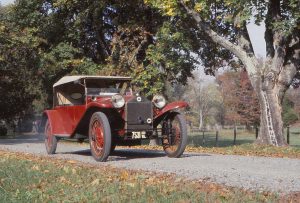
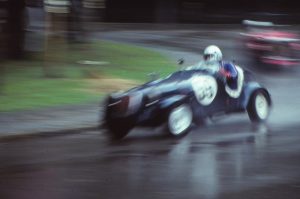
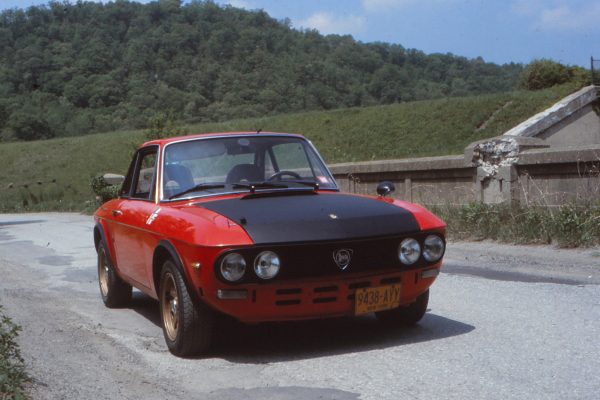
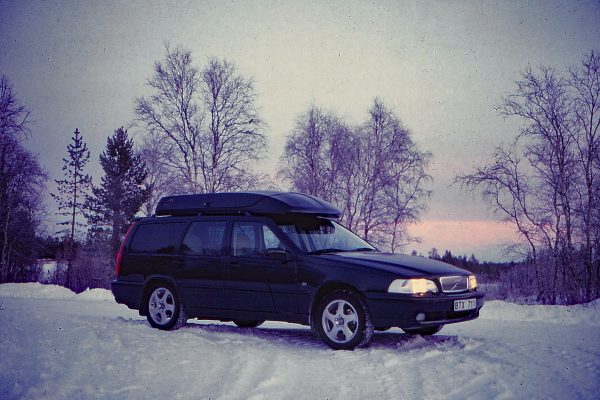

Wow. This car sounds like Lola’s version of the Lotus 30 and 40. The 30 was bad enough, but Richie Ginther described the 40 as, “a 30 with 10 more mistakes.” Designed to show Ford it had picked the wrong company to design and develop the GT40 (ironically that company was Lola), he pulled every trick out of his book of tricks, and created one of the worst Can Am cars ever.
See Roman Brio Lola for the rest of the cars history